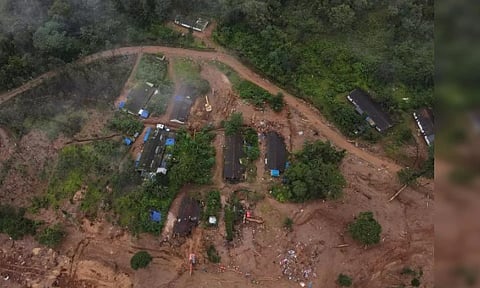What Caused Wayanad Tragedy, A Look At The Triple-Cause: Climate Change, Human Factor & Terrain
Towering cumulonimbus clouds brought on by climate change are causing severe downpours and abrupt bursts of cloud cover over Kerala. Approximately 50% of Kerala has loose topsoil and slopes higher than 20 degrees. And when the government of the day comes up with development projects in high-risk regions, disasters like the one in Wayanad are just waiting to happen.
The calamity in Wayanad occurred early on Tuesday at popular destinations for travellers seeking solitude and unspoiled surroundings. The beautiful Wayanad region of Kerala descended into anarchy and hopelessness.
At least 250 people lost their lives in the terrible trail of death and ruin caused by devastating landslides. Numerous people are still missing, buried under the rubble, and hundreds more are in hospitals with serious injuries.
The Wayanad tragedy has intensified discussions concerning how climate change and human activity contribute to the escalation of natural catastrophes like landslides, floods, and flash floods in Kerala.
While the real scale of the disaster is still unravelling with rescue efforts progressing amid challenges posed by the magnitude of destruction, terrain, and weather, reports narrate heart-wrenching stories of devastation, despair and grief.
The Ministry of Earth Sciences notified the Lok Sabha in July 2022 that Kerala had seen the greatest number of significant landslides in the nation in the past seven years. Approximately 59.2%, or 2,239, of the 3,782 landslides reported between 2015 and 2022 happened in Kerala.
Over 400 people were killed by Kerala’s disastrous floods in 2018. Numerous landslides and floods in Kerala’s Kottayam and Idukki districts claimed the lives of scores of people in 2021. Furthermore, the India Meteorological Department’s Climate Report of India states that 32 people died in Kerala in 2022 as a result of extreme weather-related catastrophes like landslides and flash floods.
Human influences are evidently responsible for the annual devastation that befalls Kerala. An additional concerning element worsening their situation is climate change and its impact on global weather patterns.
Since the massive floods of 2018, this is the worst rain-related calamity to hit Kerala. The terrible warning that more frequent and severe natural disasters are occurring in the ecologically vulnerable state comes from the events that transpired in Wayanad. Kerala has a dense population, which increases the human cost of disasters, complicates rescue and relief efforts, and makes prevention and mitigation measures harder to implement.
Kerala needs to face the dual realities of persistent natural disasters and harsh weather patterns. To minimise the damage, it must equip itself to handle the disasters. It seems that the state cannot strictly adopt all of the suggestions made by ecology expert panels given the density of human habitats. That being said, it does not follow that human activity in sensitive areas should be unchecked or unmonitored.
The state cannot afford to overlook development’s sustainability component. In addition, it must set up reliable monitoring and warning systems to notify residents of potential floods and landslides. Even after identifying landslide-prone locations, “run-out maps” are still required to forecast the debris flow’s route.
High time for the state to relook why ‘it happens in Kerala’.


